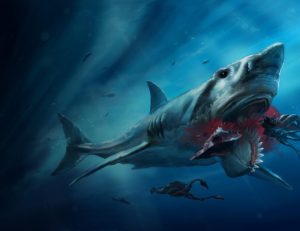
A rare fossil of a prehistoric monster-fish’s spiral of chainsaw-like teeth has been found in Russia.
The scary Helicoprion was an extinct ancestor of the modern-day ghost shark or ratfish with an impressive set of nashers – that lived millions of years before the dinosaurs.
Discovered in an open coal mine in Volgograd, southern Russia, the latest example of the cartilaginous fish shows a fossilised arsenal of radial murder-teeth.

The fossilised tooth spiral of a Helicoprion was discovered in an open coal mine in Volgograd, Russia

Scientists check the fossil of Helicoprion tooth spiral. They claim it is ‘one of the most mysterious fossils of the late Paleozoic era’
Some 270 million years ago the Helicoprion was the largest predator on Earth, according to US professor Leif Tapanila.
Professor Igor Novikov, of Moscow’s Paleontological Institute, said the circular or buzz saw shaped tooth spiral is ‘one of the most mysterious fossils of the late Paleozoic era.’
He said: ‘It has a series of sharp teeth-blades with a common spiral-coiled root with numerous (dozens of) teeth.

Reconstruction of the appearance of Helicoprion. Scientists believe it used its razor teeth to snarl up soft-bodied prey like prehistoric squid
‘The teeth had serrated sharpening and when closing the jaws – it turned forward, which allowed the fish to effectively interact with the surface of the prey.’
The razor teeth snarled up soft-bodied prey like prehistoric squid.
Like 96 per cent of species at the time the Helicoprion is thought to have fallen victim to the mass extinction, the biggest in the world’s history, that brought the Permian era to an end around 252 million years ago.

Fossilised tooth spiral of Helicoprion kept in Krasnoufimsk Museum of Local History, near the place where the first fossilised spiral was found
The fish was first described by Russian scientist Alexander Karpinsky in 1899 from a fossil discovered near Krasnoufimsk.
Scientists were for a long time baffled over the fish, for a time thinking the Helicoprion’s murder teeth were fixed to an elephant-like trunk appendage.
In fact, it is now established that the teeth grew inside the fish’s lower jaw like a ‘partly concealed tooth factory,’ reported Scientific American.
HOW DID SCIENTISTS WORK OUT WHAT THE HELICOPRION LOOKED LIKE?

The 25ft monster ‘shark’ with chainsaw teeth that roamed the prehistoric seas 270 million years ago was first ‘pictured’ by scientists in 2013.
The bizarre fish Helicoprion, an early ancestor of sharks, had a conveyor belt of jagged teeth that spiralled out of its lower jaw and ripped prey to shreds.
Using state of the art scanners to create 3-D virtual reconstructions of its jaws, researchers discovered what the ancient beast would have looked like as it homed in on marine animals.
Located at the back, the teeth were ‘saw-like’ with the jaw creating a rolling back and slicing mechanism.
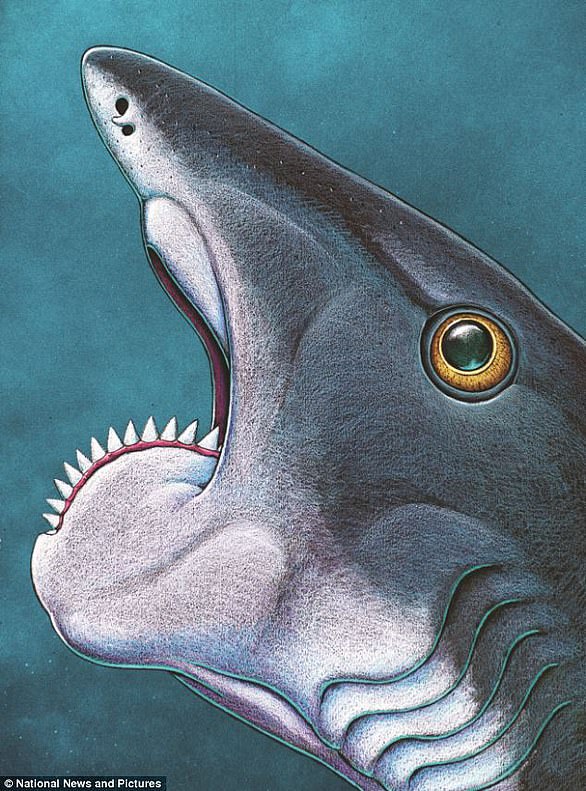
Helicoprion, an early ancestor of sharks, had a conveyor belt of jagged teeth that spiralled out of its lower jaw and ripped prey to shreds
Professor Leif Tapanila, of Idaho State University, said: ‘We were able to answer where the set of teeth fit in the animal.
‘They fit in the back of the mouth, right next to the back joint of the jaw.
‘We were able to refute it might have been located at the front of the jaw.’
The creature, unlike any shark alive today, grew up to twenty-five feet in length and weighed almost half a ton (71 stone), making it the biggest fish in the sea.
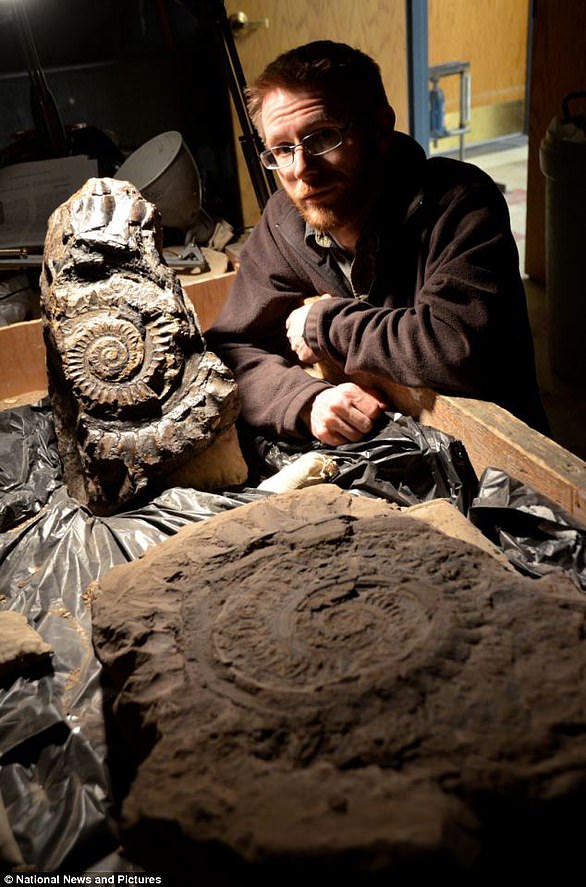
Professor Leif Tapanila, of Idaho State University, used state of the art scanners to create 3-D virtual reconstructions of its jaws
The large ‘spiral’ fossils of teeth are all that remain from the hundred specimens found around the world as its skeleton was made of cartilage, just like its modern descendants, which does not preserve well.
Helicoprion’s appearance has long mystified scientists because no one could work out how these teeth, which resemble a spiral saw blade, fit into it.

Geoscientist Prof Tapanila said: ‘CT (computerised tomography) scans of a unique specimen from Idaho show the spiral of teeth within the jaws of the animal, giving new information on what the animal looked like, and how it ate.’
Findings, published in the Royal Society journal Biology Letters, are based on firm evidence fed into computers at his special virtualization laboratory.
The beast is more closely related to ratfish than sharks.
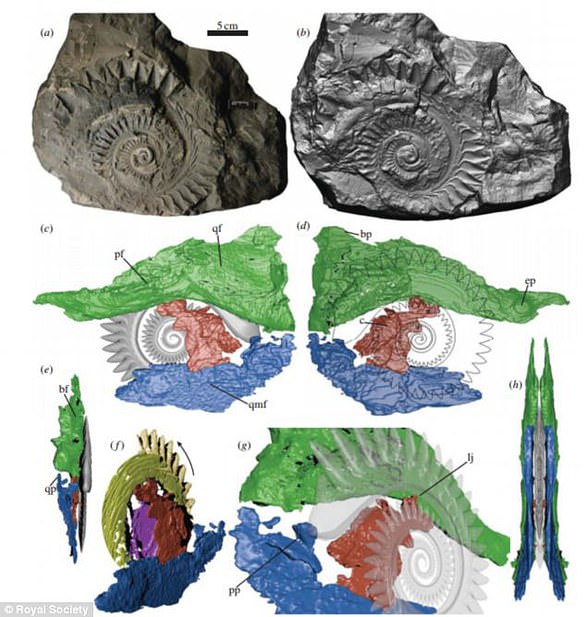
The 3D models created by the team show how the ‘spiral’ teeth fitted in the head of the animal
Both species have cartilage, rather than bone, but are classified differently.
It was always assumed the Helicoprion was a shark, but it is more closely related to ratfish, a Holocephala.
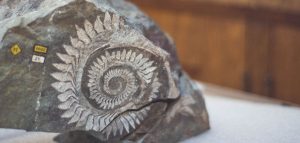
The main thing it has in common with sharks is the structure of its teeth, everything else is Holocephalan.
Rocks in southeastern Idaho have preserved the largest, most abundant and pristine specimens of Helicoprion many of which include the lower jaw cartilage, teeth and rare impressions of skin.
Other remains have been found in Utah and Wyoming when these regions were covered in sea more than 250 million years ago.

The terrifying 25 foot long prehistoric shark with a ‘spiral’ of teeth that worked like a chainsaw





